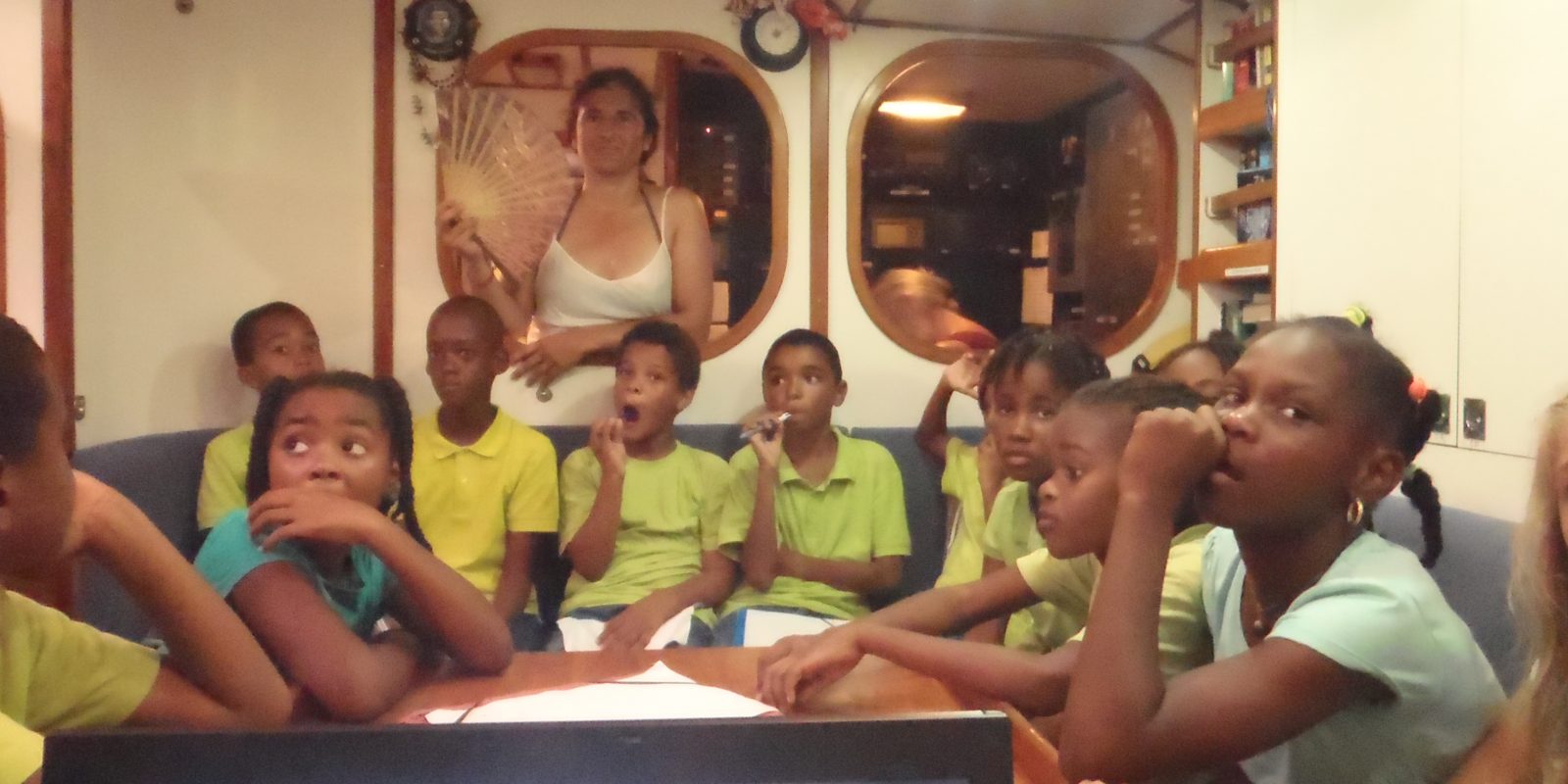For a few hours Monday morning the population aboard Sea Dragon increased 3-fold when the eXXpedition 2014 mission and journey was shared with 60 of Martinique’s school children. Sue, Malin, Laura, Maria, and Diana showed the children ages 5-11 and their teachers how the ship operated, while explaining what life was like aboard Sea Dragon. The swinging ‘gimbled’ stove fascinated them as Sue described cooking in the galley when the boat was nearly sideways.
Their whispers and giggles quieted when Maria and Diana showed them videos on the big flatscreen of the varied tiny sea creatures collected from the Manta trawl’s neuston net; bright blue copepods and other crustaceans swimming among tiny bits of colorful plastic plus bug-eyed miniature squids and baby billfish, and lots more. Thankfully, Pascal from Atlantic Odyssey was on hand to translate our English into French so we could give a 10-minute biology lesson. Discussion ensued about the life-cycle of plastic, of how it ends up floating in the middle of the Atlantic Ocean hundreds of miles from land, and the adverse consequences for marine life and ultimately ourselves. One somber little boy obviously distressed by the mental image of bird and turtle bellies filled with plastic instead of fish simply asked: “Why do we do this?” Why indeed.
These tours and our individual interactions with teachers and homeschooling sailor parents really emphasize the need for the science curriculum that eXXpedition is developing. The research and discovery missions aboard Sea Dragon provide exciting and interactive materials (see the Marine Debris Tracker app, and Marine Litter Watch App) to educate and engage young minds. Who knows, maybe children reached by our message today will find the solutions we need for a sustainable tomorrow. Do we dare imagine children touring Sea Dragon 50 years from now when marine debris is barely a memory asking the question ‘Why did our grandparents allow so much plastic to flow into the ocean’?

